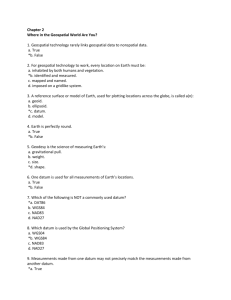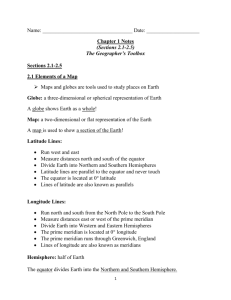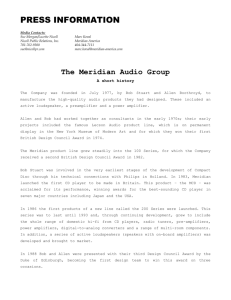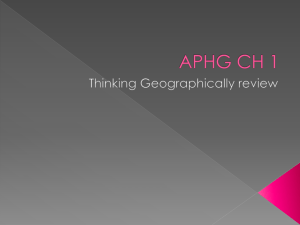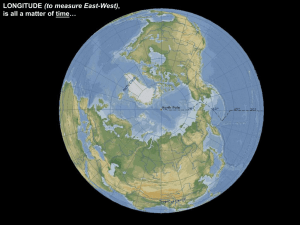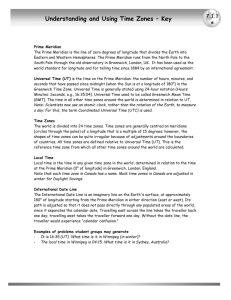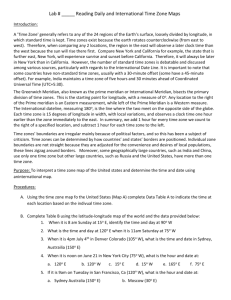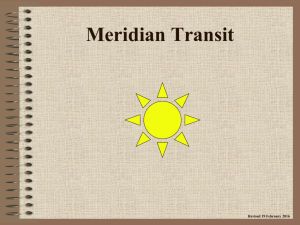The Universal Transverse Mercator System
advertisement
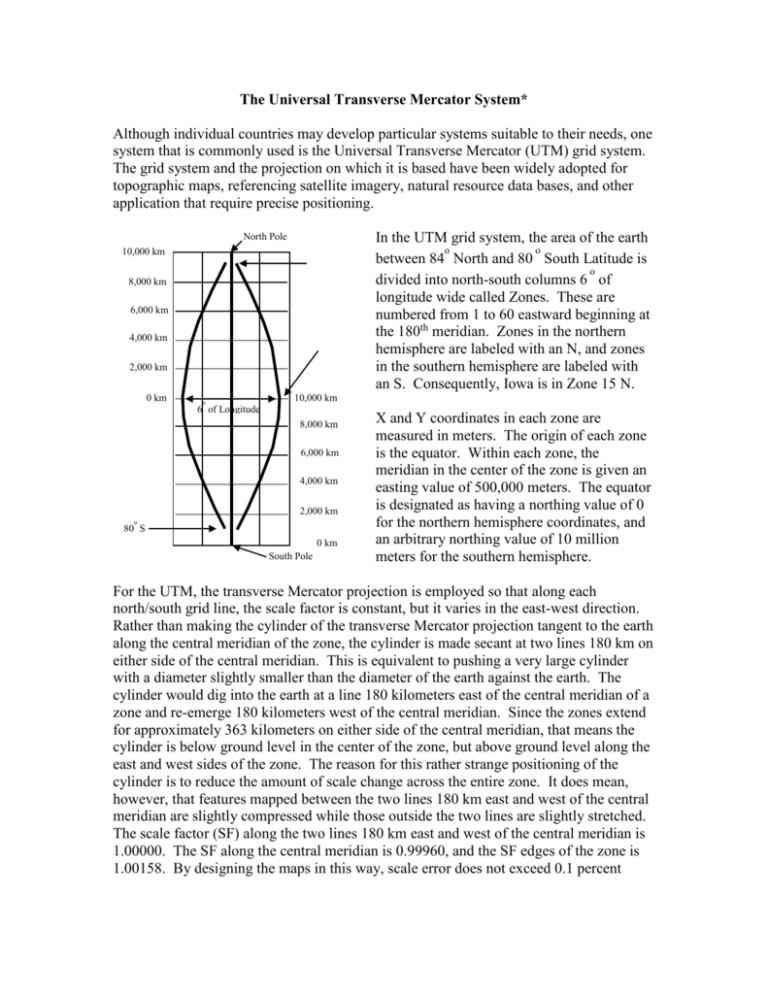
The Universal Transverse Mercator System* Although individual countries may develop particular systems suitable to their needs, one system that is commonly used is the Universal Transverse Mercator (UTM) grid system. The grid system and the projection on which it is based have been widely adopted for topographic maps, referencing satellite imagery, natural resource data bases, and other application that require precise positioning. In the UTM grid system, the area of the earth o o between 84 North and 80 South Latitude is o divided into north-south columns 6 of longitude wide called Zones. These are numbered from 1 to 60 eastward beginning at the 180th meridian. Zones in the northern hemisphere are labeled with an N, and zones in the southern hemisphere are labeled with an S. Consequently, Iowa is in Zone 15 N. North Pole 10,000 km 8,000 km 6,000 km 4,000 km 2,000 km 0 km o 10,000 km 6 of Longitude 8,000 km 6,000 km 4,000 km 2,000 km o 80 S 0 km South Pole X and Y coordinates in each zone are measured in meters. The origin of each zone is the equator. Within each zone, the meridian in the center of the zone is given an easting value of 500,000 meters. The equator is designated as having a northing value of 0 for the northern hemisphere coordinates, and an arbitrary northing value of 10 million meters for the southern hemisphere. For the UTM, the transverse Mercator projection is employed so that along each north/south grid line, the scale factor is constant, but it varies in the east-west direction. Rather than making the cylinder of the transverse Mercator projection tangent to the earth along the central meridian of the zone, the cylinder is made secant at two lines 180 km on either side of the central meridian. This is equivalent to pushing a very large cylinder with a diameter slightly smaller than the diameter of the earth against the earth. The cylinder would dig into the earth at a line 180 kilometers east of the central meridian of a zone and re-emerge 180 kilometers west of the central meridian. Since the zones extend for approximately 363 kilometers on either side of the central meridian, that means the cylinder is below ground level in the center of the zone, but above ground level along the east and west sides of the zone. The reason for this rather strange positioning of the cylinder is to reduce the amount of scale change across the entire zone. It does mean, however, that features mapped between the two lines 180 km east and west of the central meridian are slightly compressed while those outside the two lines are slightly stretched. The scale factor (SF) along the two lines 180 km east and west of the central meridian is 1.00000. The SF along the central meridian is 0.99960, and the SF edges of the zone is 1.00158. By designing the maps in this way, scale error does not exceed 0.1 percent within each zone, and for all practical purposes, UTM maps are used as if the scale were constant over the entire zone. The UTM projection creates a map that is conformal within the zone, gives minimal distortion of areas within the zone and local angles are true. * Based on Robinson, A. H., et al. 1984. Elements of Cartography. Wiley and Sons, 5th Edition. 544 pp.
